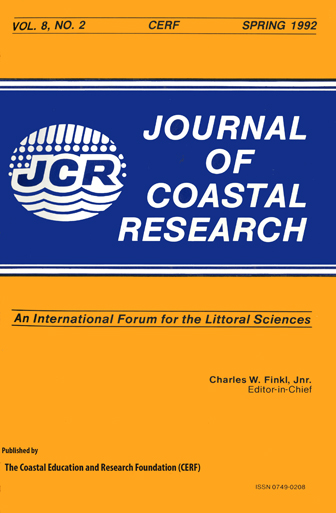Spatial Analysis of Shoreline Recession and Accretion
Keywords:
Shoreline rate-of-change, optimal sample spacing, alongshore variability, geostatistics, ordinary krigingAbstract
An optimal sampling design is an important consideration when collecting large volumes of data: Too few data lead to inconclusive results and oversampling is inefficient and often costly. Due to the wide geographical impact of coastal processes along the shore, shoreline responses (erosion or accretion) do not significantly vary from transect to transect at some sample spacings. Thus, shoreline rates of change exhibit a "nearest neighbor" effect or spatial autocorrelation. This phenomenon inhibits the utility of conventional statistical models for sample size determination. In this paper we capitalize on this spatial autocorrelation by using the Theory of Regionalized Variables or geostatistics. Geostatistics enables global estimates of along-the-shore rates of change, point estimates at unsampled locations, and provides nomograms for optimal sample designs based on standard errors of this estimate. Results of the spatial analyses show that using local estimation variances, obtained by ordinary kriging, is an effective means of determining optimal sample size. The 50 m spacing of transects along Hatteras Island, North Carolina, provides an excellent estimate of rates between transects. This dense sampling scheme is, however, redundant due to the high degree of spatial autocorrelation. Last, our confidence in estimation of rate-of-change values in the spatial domain (due to spatial continuity) far exceeds our confidence in rate values calculated at a sample location in the temporal domain.


